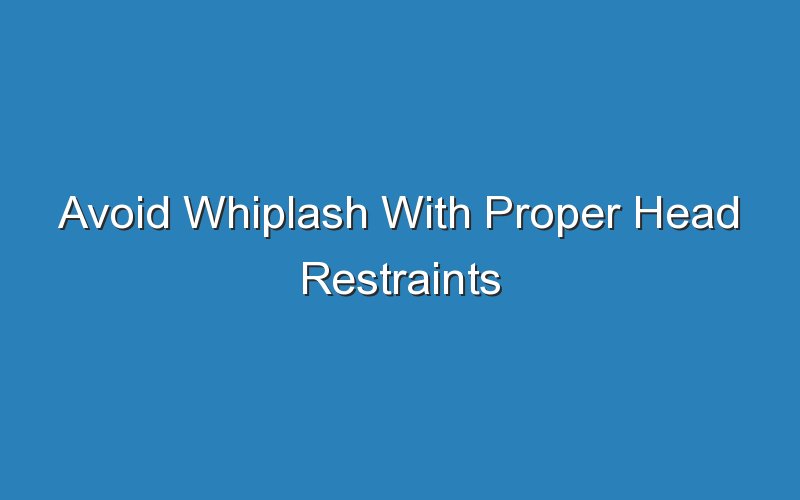The center of the headrest must be placed directly behind the head, preventing it from jerking backward in an accident. The distance behind the head from the headrest must be as short as possible. If this distance is more than four inches, it can aggravate the effects of whiplash. Therefore, to avoid whiplash, the center of the seat must be as near as possible to the ear.
While the head restraint should reach the top of the head, it should not rest on the neck. This can cause a person to overextend their neck and cause pain. It is important to remember that whiplash can be prevented if you follow a few simple tips. The center of the headrest must be three inches above the level of the center of the head. When adjusted properly, the headrest will protect the neck and prevent whiplash.
The center of the headrest must be located approximately three inches above the head. If it is not, the victim may experience whiplash. The center of the headrest should not rest on the neck. A low headrest can cause the neck to overextend, while a high one can provide no protection. So, make sure that the center of the seat restraint is properly positioned.
Properly positioned head restraints can protect you from a severe whiplash injury. The center of the headrest should be three inches below the center of the head, while the top part should be at the top of the ears. The center of the headrest should also be close to the back of the head. To avoid whiplash, it is important to wear a seat belt while riding in the car. A seat belt keeps your head in a neutral position during a collision. During a crash, the seat belt also aligns the back of the head and neck with the head restraint.
Properly positioned head restraints are an essential part of a car’s interior. The top of the headrest should be three inches above the top of the ears. The back of the neck should be close to the center of the headrest. The seat belt is a very important piece of safety equipment, as it holds your head in a neutral position during a collision.
Properly positioned head restraints can help prevent whiplash injuries. The center of the headrest should be three inches away from the center of the head and should not rest on the neck. While it is important to maintain the correct position of the headrest, it is also vital to wear a seat belt to prevent any injury from occurring. It will keep your neck aligned with the seat belt and avoid whiplash.
Properly positioned head restraints will help protect against whiplash. The center of the headrest must be at least three inches below the back of the head. The center of the headrest must not rest on the neck. If it does, the neck will overextend and the head will be unable to provide protection. For this reason, the center of the seatbelt must be at least three inches above the back of the head.
The proper positioning of the headrest is important to prevent whiplash. In an accident, the center of the headrest must be at least three inches above the center of the head. The headrest must not rest on the neck. A low-set seat can result in a neck that overextends, while a high-positioned seat will not offer any protection. The seatbelt must be placed at the level of the headrest to avoid injuries caused by a rear-end crash.
Besides being comfortable, a proper headrest must also prevent serious whiplash. A seat with the right position will prevent your neck from overextending in an accident. Furthermore, a headrest that is three inches high should not rest on your neck. If the headrest rests on your neck, it will not protect your head and neck from injuries. If the seat is too low, your neck will overextend, and you will be at risk of causing more harm than good.

